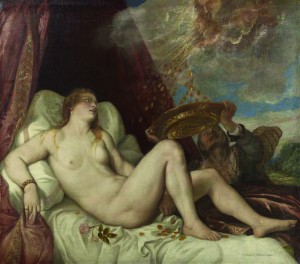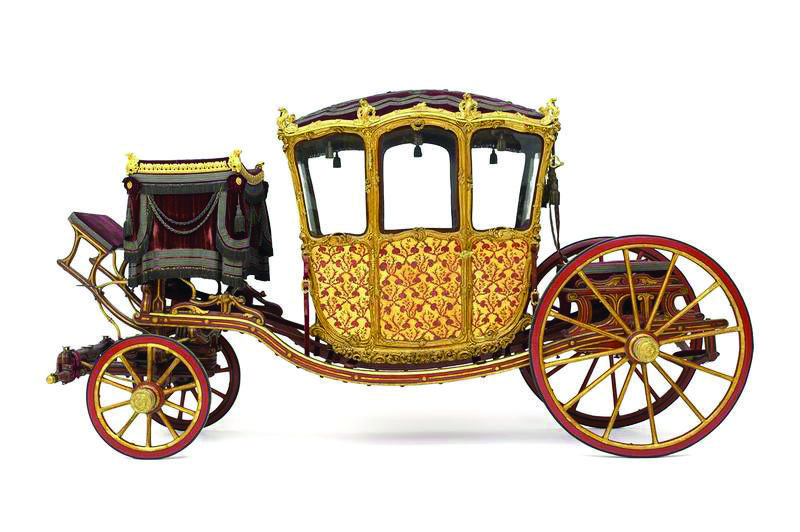Age of an Empire
Relics from the Habsburg Dynasty make an appearance at the MIA.
The Prince’s Dress Carriage is one of the larger items on display and was used as transportation by Maria Theresa and her husband.
March 13, 2015

Danaë, painted by Titian, is one of five similar paintings by the artist that depicts Zeus appearing to the mythological princess Danaë as a shower of gold.
For the first time in 65 years, priceless relics have left their home at the Kunsthistorisches Museum in Vienna, Austria and visitors to the Minneapolis Institute of Arts (MIA) now have a chance to see firsthand the history of one of Austria’s most influential historical families: The Habsburgs.
Guests are greeted by a suit of armor at the entrance to the exhibition as they step back into the age of the Habsburg Empire. “The Habsburgs: Rarely Seen Masterpieces from Europe’s Greatest Dynasty” covers the span of nearly 500 years, from Maximilian I taking the throne in 1500 to the Habsburg abdication in 1918. This first room provides a complete timeline of the Habsburg history and rulers, many of whom served as Holy Roman Emperor, as well as information about the very first Habsburg emperor and his wife, to acquaint guests with the world they are about to enter.
A few steps further brings you face to face with two knights, locked in an eternal joust atop their horses, plumes shooting from their helmets. It feels like a scene from a Renaissance festival, except the armor on display was worn by real knights during their battles, striding forward for the honor of their emperor.
Each room is a feast for the eyes for historians and art enthusiasts alike. Informative plaques are hung on either side of the doorway as you enter, explaining where you are in the timeline, who was ruling, and what their reign meant for the country and for their family. The walls are covered in paintings by esteemed artists discussed in basic art history courses, such as Dűrer, Titian, Velázquez, and Caravaggio. If paintings aren’t your forte, the collection of nearly 100 pieces also includes a variety of weapons, objects of religious devotion, scientific instruments and a variety of garments worn during the different periods.
Even transportation is included in the display. About halfway through the exhibit, a grand 18th century stagecoach spans the length of the room and an elaborate sleigh lies just around the corner. Both pieces belonged to the famous Maria Theresa. If you don’t recognize her name, you’re bound to recognize the name of her daughter: Marie Antoinette.
The family was met with a mixture of fortune and tragedy during the many years they were in power. They reached the height of their power in the 16th century under the rules of Charles V, but retained influence through the Reformation and the Enlightenment before their empire met its decline at the end of World War I, when any remaining members of the Habsburg family were forced to renounce their name or leave the country.
The exhibition will remain on display at the MIA until May 10, 2015.



